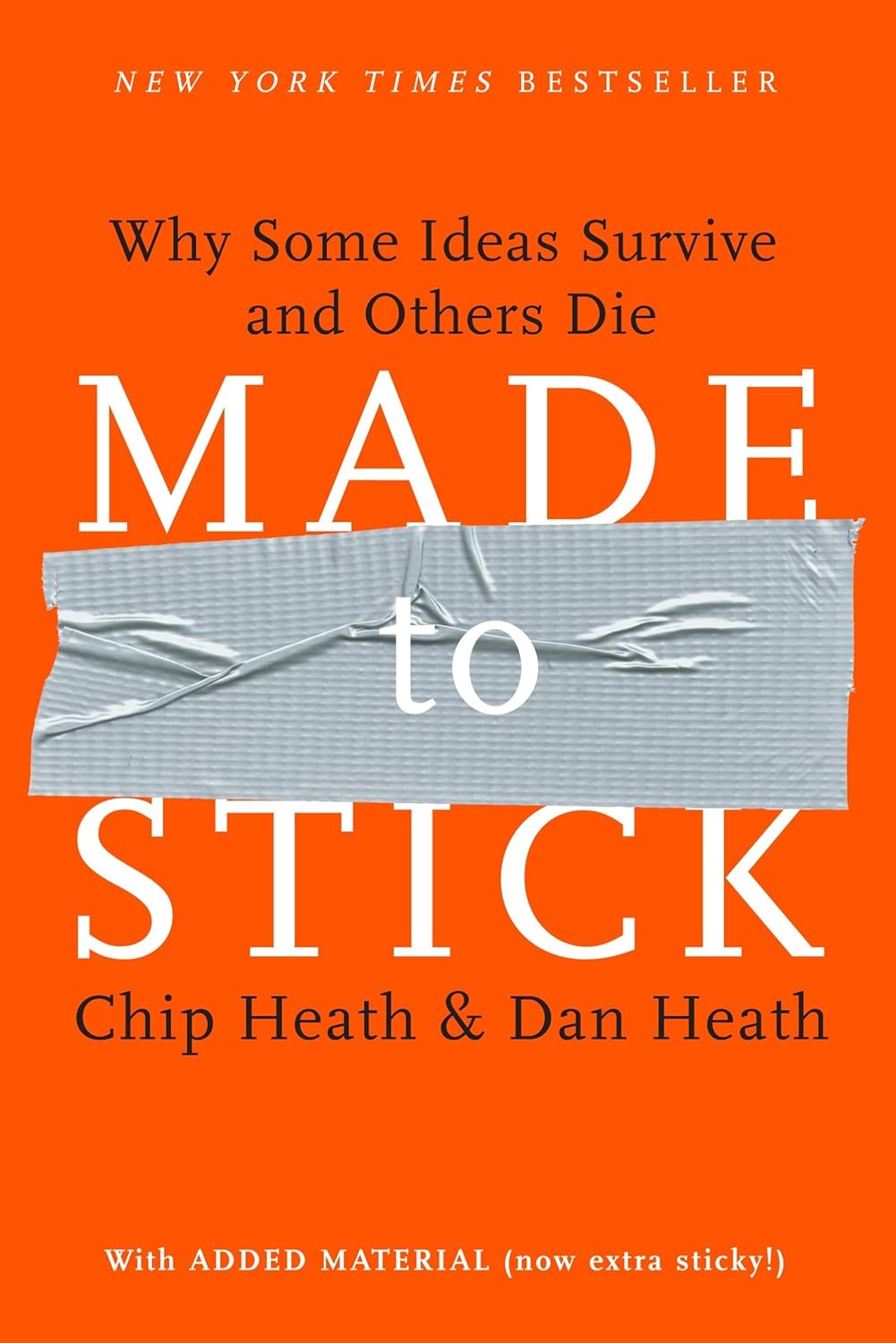Made to Stick: Why Some Ideas Survive and Others Die

What sticks?
6 principles that make an idea stick
- Simplicity. The golden rule: a one-sentence statement so profound that an individual could spend a lifetime learning to follow it
- Unexpectedness. Generate interest and curiosity by systematically opening gaps in their knowledge and then filling those gaps.
- Concreteness. Naturally sticky ideas are full of concrete images. Speaking concretely is the only way to ensure that our idea will mean the same thing to everyone in our audience
- Credibility. We need ways to help people test our ideas for themselves. Reagan vs Carter: “before you vote, ask yourself if you are better off today than you were 4 years ago”
- Emotions. People care about our ideas when we make them feel something.
- Stories. How do we get people to act on our ideas? We tell stories.
To create a successful idea: a Simple Unexpected Concrete Credentialed Emotional Story (SUCCES)
Simple
Two steps in making an idea sticky:
- Find the core
- Translate the core using SUCCES checklist
Unexpected
- Curiosity happens when we feel a gap in our knowledge. Gaps cause pain. When we want to know something but don’t, it’s like having an itch that we need to scratch. We need to open gaps before we close them and shift out thinking from “What information do I need to convey?” to “What questions do I want my audience to ask?”
- To prove that the knowledge gaps exist, it may be necessary to highlight some knowledge first.
Concrete
- Abstraction makes it harder to understand and idea and to remember it. It also can be interpreted differently. Concreteness helps us avoid these problems.
- Concrete language helps people, especially novices, understand new concepts. Abstraction is the luxury of the expert.
Credibility
- People believe what they can verify.
- Use specific details, trusted sources, or “testable credentials” that let your audience see the truth for themselves.
Emotions
- People act when they care, not just when they understand.
- Tie your message to human values and make your audience feel something.
Stories
- Stories turn information into inspiration.
- A good story shows how to act and motivates people to follow through.